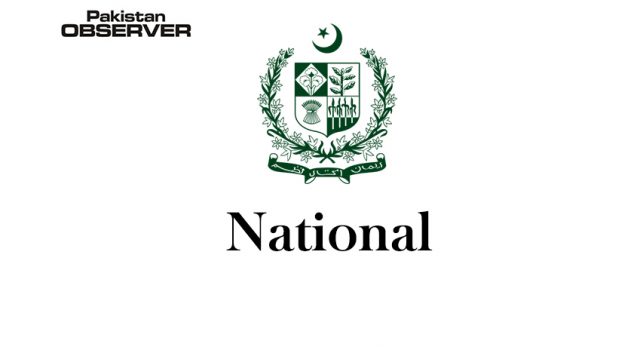Umar Riaz Abbasi
MOTIVATION can be intrinsic (self motivation), extrinsic (motivation by external rewards), or reactionary (temporary response to events). Jannah is a positive motivator. Jahannum is a negative motivator. Motivation starts with commitment to an intention Ikhlaas al niyyah. The reward for work is commensurate with the niyyah. Any work without niyyah is not recognized. The best of work is consistent and continuous.
Performance may fall short of the niyyat. Work can be good work, (amal hasan) or bad work, (amal sayyiah). High job satisfaction is directly related to high motivation. Motivated workers know that work is ibadat and that Allah observes all they do so they strive for excellence, ihsaan. The salary meets the needs of the worker and family so that he can devote time and energy to the work and is not a just return for the work. Work is ‘ibadat and only Allah can recompense for it. Other sources of motivation are honor, sharaf, generosity, karam, and fulfillment, wafaa.
Motivated and motivated leaders clarify goals, set objectives, consult and respect followers, deal with followers kindly, humanely, and with fairness, have good 2-way communication, and make followers feel secure. A motivating work environment is challenging and meaningful. It has opportunities for advancement, learning and personal growth. It gives responsibility, independence, and job satisfaction. Positive reinforcement (appreciation, reward and praise) is a motivator.
Negative motivation is due to worries, lack of self-confidence, low self-esteem, low self-worth, negative opinions in the work place, poor working conditions, poor leadership, inequity, and injustice. Negative reinforcement such as reprimand demotivates. People should work because they believe not because they receive. Intrinsic rewards are effective motivators than extrinsic motivators. Intrinsic rewards are task completion, achievement, autonomy, and personal growth. Extrinsic rewards are salary, benefits, and promotions.
Students are idealistic on entry into medical school and talk about serving the community. On graduation many students think about material benefits and social status. A physician in a materialistic society is torn between contradictory forces of greed and service. Although service should have the higher priority, the material rights and privileges of the physician should not be forgotten because he also wants to live a happy and honorable life.
A physician is a community leader who has to undertake tarbiyyah, amr bi maroof, and nahy al munkar. He is an advocate for the poor, the weak, and the deprived. He has to undertake research to push forward the frontiers of knowledge. He has to share his knowledge by teaching others. He has responsibility to the environment and posterity. Ancient Muslim physicians were encyclopedic in knowledge, all-rounded, motivated, hardworking, and productive. They excelled in medicine as committed Muslims because Islam is not incompatible with science. Their achievements are a motivator for today’s medical students and physicians.
Abu-Bakr Al Razi (251-313H), wrote more than 100 books (the most famous being al Hawi al Kabir), investigated diseases (gynecologic, obstetrical, hereditary, eye, small pox, and measles), discovered surgical sutures, used anesthetics, used ammonia to control diarrhea, considered psychological factors in disease treatment, and was director of hospitals in Baghdad and Rayy. Ibn Sina (370-428H) wrote many books (the most famous being al Qanuun fi al Tibb), recognized that TB was contagious, accurately described the symptoms of diabetes mellitus, discovered ancylostomysis, and contributed to science, mathematics, chemistry, and philosophy.
Al Zahrawi (d. 404H) had interest in surgery, pharmacology, and anatomy. He designed over 200 surgical instruments. His book Kitaab al tasriif became a standard textbook of surgery. He was an expert in cancer surgery and tooth extraction. Ibn Zuhr (d. 487H), lived in Andalusia and Morocco and authored the book al Taysir translated into Latin and used in Europe. Ibn Rushd (d. 595H) was a philosopher and a medical practitioner. His book al Kulliyat translated in Europe.
He made the observation that smallpox infected only once. Ibn Al Nafees (d. 686H) described blood circulation before William Harvey and authored Sharh tashriih al qanuun in which he explained pulmonary circulation. It is the need of the hour to study all above mentioned Authentic Books of Muslim Philosophers and Thinkers to regain our pride of innovation and creativity.
Muslim Thinkers has provided the youngsters a solid based ground to put their energy in scientific knowledge to stand with developed nations in contemporary challenging World. Pakistan has huge crowd of Young generation that can play a vital role to lead the country towards prosperity, peace and harmony through advanced skills and professional attitude.
This is a suitable time to reconnect our youth with Book and library to understand the golden asset our previous Thinker’s writings and research to meet the upcoming standards of living to serve the nation.
—The writer is well known Author and Lecturer at NUML Islamabad and can be reached at [email protected]










